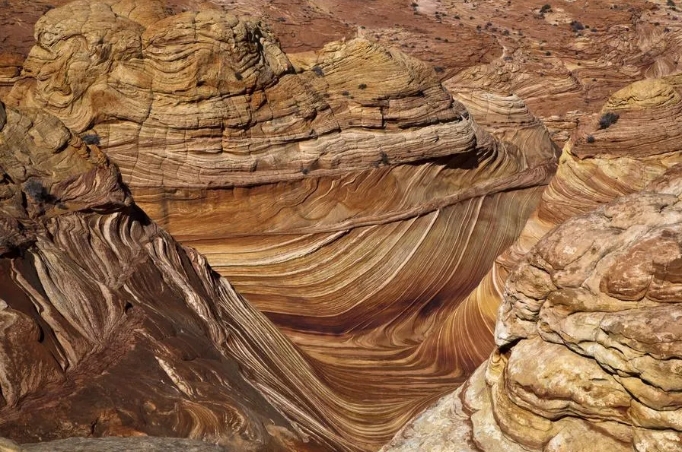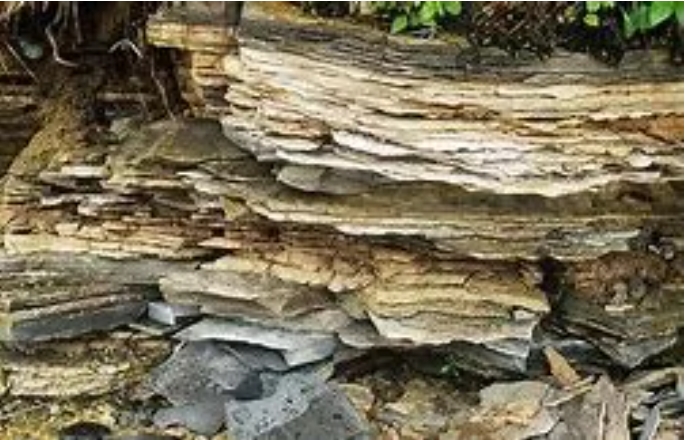Stăpânește punctele de bază ale tehnologiei de foraj
Noua tehnologie: Sistem de demolare a rocii O2
Legătură:
Peste 60% din resursele minerale descoperite până acum sunt distribuite în subteran, ceea ce necesită tehnologie de foraj de prospectare. Deoarece prospectarea geologică a Chinei s-a dezvoltat relativ târziu, nivelul tehnologiei de foraj nu este foarte ridicat, iar adâncimea medie de prospectare este între 300 de metri și 500 de metri. Acest lucru a condus la un anumit decalaj între prospectarea profundă a Chinei și la nivel internațional, ceea ce nu este propice dezvoltării în continuare a activității de prospectare profundă a Chinei. Prin urmare, cercetătorii tehnici relevanți trebuie să studieze în continuare tehnologia de foraj, în special tehnologia de foraj adânc.
Caracteristicile forajului de prospecție la adâncime:
În comparație cu prospectarea de mică adâncime și prospectarea în cariera deschisă, prospectarea adâncă este utilizată în principal pentru prospectarea în crusta adâncă. Prospectorii geologici folosesc tehnologia de foraj în puțuri adânci pentru a efectua prospectarea straturilor. Forajul de prospectare în adâncime are următoarele caracteristici principale.

(1) În timpul procesului de foraj vor fi întâlnite diferite tipuri de straturi. Este necesar să se facă toate pregătirile înainte de a efectua prospectări profunde, mai întâi forând straturile de mică adâncime, apoi mergând treptat mai adânc. În timpul procesului de foraj, trebuie luat în considerare tipul de strat. Aceste straturi sunt toate straturi antice care s-au format pe o perioadă lungă de timp și au suferit modificări continue. De exemplu, în timpul procesului de foraj de prospectare profundă, Mina de Fier Jining a întâlnit diferite tipuri de formațiuni de rocă, cum ar fi calcarul Majiagou, calcarul Changqing, calcarul Jiulong, dolomita și filita sericită silicioasă. La foraj, este nevoie de un foraj cu diametru mare pentru a rezolva problema prăbușirii peretelui puțului.
(2) Straturi complexe. În timpul forajelor de prospecție în adâncime, este inevitabil afectată de structurile geologice. În special atunci când se explorează mineralele metalice, diversele tipuri de strate și influența diferiților factori geologici vor duce la rezultate inexacte ale prospectării.

De exemplu, când se compară diverse minereuri, inclusiv minereu de fier, minereu de argint, minereu de aur și minereu de cupru, datorită mediului geologic complex de la partea de jos a stratului de minereu, structura se mișcă în mod constant, iar zona de defecțiune se dezvoltă constant, straturile sunt instabile. Unele straturi conțin și apă, care este și un important factor destabilizator.
Noroiul și pietrele din straturi vor face ca straturile să fie instabile, prezentând o alunecare slabă abrazivă sau infiltrarea în straturi. Deoarece timpul de foraj este relativ lung, peretele găurii își va pierde stabilitatea. După ce formațiunea este expusă, pe măsură ce timpul de foraj crește, formațiunea va fi inevitabil afectată de foraj și schimbare. Când întâlniți formațiuni dure și alunecoase în timpul forajului, burghiul va fi deteriorat și eficiența forajului va fi inevitabil afectată.
(3) Este dificil să previi înclinarea găurii de foraj. Atunci când se efectuează foraje de prospectare profunde, este ușor să întâlniți formațiuni cu folie sau așternut bine dezvoltate. Anizotropia rocilor în sine va provoca fenomenul de dificultate în prevenirea înclinării în timpul procesului de foraj. Când are loc înclinarea găurii de foraj, este dificil de rezolvat. Optimizarea tehnologiei de foraj poate nu numai să îmbunătățească calitatea forajului de prospectare profundă, ci și să asigure progresul.

Puncte cheie ale tehnologiei de foraj de prospectare profundă:
Pe baza analizei de mai sus a caracteristicilor forajului de prospecție în adâncime, se poate observa clar că unele fenomene comune vor avea loc în procesul de foraj de prospecțiune adâncă și trebuie făcute ajustări tehnice corespunzătoare pentru a se asigura că operațiunea tehnică este în vigoare și calitatea forajului este imbunatatita. Punctele tehnice ale acestui studiu includ în principal trei aspecte, și anume punctele tehnice ale forajului în formațiuni complexe, punctele tehnice ale forajului cu noroi de falie și punctele tehnice ale forajului direcțional. Detaliile sunt după cum urmează.
(1) Puncte cheie ale tehnologiei de foraj pentru straturile complexe în forajele de prospecție în adâncime:
Straturi complexe formate prin acțiunea râului, roci minerale, intemperii etc., roca în sine este un strat slab consolidat, în care valoarea de legătură a particulelor de rocă este relativ scăzută. Acest tip de strat ar trebui să fie selectiv în utilizarea instrumentelor de foraj pentru a asigura desfășurarea fără probleme a lucrărilor de foraj de prospectare și pentru a obține de două ori rezultatul cu jumătate din efort.
La intrarea în operațiunea de foraj, este necesar să se controleze în mod rezonabil viteza de foraj, să se înțeleagă cu precizie locația de foraj și să se controleze în mod rezonabil factorii de influență pentru a evita efectele negative asupra lucrărilor de foraj, cauzând căderea sau spargerea peretelui găurii.
Vâscozitatea fluidului de spălare utilizat în foraj poate crește aderența scăzută a particulelor de rocă și poate trata particulele de rocă care apar pe peretele găurii pentru a crește legătura dintre acestea și rocă. Pompa de noroi trebuie controlată în timpul funcționării pentru a evita problema prăbușirii sau deteriorarii peretelui puțului. Prin urmare, este necesar să faceți o treabă bună de control al pierderilor de apă.
De exemplu, în procesul de prelucrare a formațiunilor de șist, este necesar să se controleze pierderile de apă între 8 ml și 10 ml pentru a reduce problema declinului formării șisturilor noroioase și pentru a evita prăbușirea sau scurgerea. Scopul principal al utilizării fluidului de foraj cu conținut ridicat de sare în timpul construcției este de a reduce dizolvarea și de a preveni formarea rocii de sare să afecteze diametrul găurii de foraj.
Atunci când întâlnești o formațiune foarte fragmentată în timpul forajelor de prospectare, este necesar să se ia anumite măsuri de astupare. Utilizarea substanțelor active sau a substanțelor de cimentare poate face ca rocile sparte afanate sau consolidate din formațiune să continue să se solidifice și să prevină căderea lor în timpul forajului, îmbunătățind astfel stabilitatea suprafeței rocii și mărind rezistența rocii înainte de forare.

Desigur, tehnologia de forare a noroiului cu spumă sau a carcasei poate fi folosită și pentru a sigila secțiunea de rocă spartă, care are un efect bun de armare asupra rocii.
(2) Puncte cheie ale tehnologiei de foraj pentru secțiunile de găuri de noroi de falie în forajele de prospecție adânci:
Formațiunile adânci pot provoca fenomene de falie de noroi sub influența mișcărilor geologice. Când forați în astfel de formațiuni, punctele cheie trebuie controlate eficient. De exemplu, după găurirea unei găuri într-o formațiune de rocă fracturată, apar de obicei probleme de curgere a plasticului, ceea ce duce la blocarea forajului sau blocarea. Atunci când formațiunea de rocă din zona fracturată este supusă unui stres ridicat pentru o perioadă lungă de timp, va exista o problemă de dezechilibru de stres intern în formațiune.
Acest tip de formațiune conține adesea argilă, cum ar fi montmorillonitul, care este predispus la absorbția apei și la umflături, provocând gât. În plus, suprafața rocii excavate este relativ mare, iar calitatea este foarte bună. Când întâlnește apă, va prinde tija de foraj, crescând astfel dificultatea de a trage tija de foraj.
Prin urmare, în timpul procesului de foraj, este necesar să se controleze pierderile de apă din mină. De obicei, pierderea de apă este de 8 mg până la 10 mg pe jumătate de oră. După ce lubrifierea este controlată, o anumită concentrație de ulei vegetal trebuie adăugată în nămol, iar concentrația trebuie să fie controlată între 6% și 10%.
(3) Puncte cheie privind tehnologia forajului direcțional în forajul de prospecție profundă:
Forarea găurilor de ramificație și a găurilor principale în prospectarea adâncă sunt verigi importante de construcție. În procesul de găurire, este necesar să stăpâniți punctele cheie ale tehnologiei de foraj direcțional, să controlați forța de găurire și să controlați precizia de găurire într-o jumătate de metru. Utilizarea tehnologiei de foraj direcțional poate obține rezultate bune în explorarea și forarea minereurilor cu halogen. În procesul de foraj de explorare în adâncime, înainte de foraj trebuie făcute diverse pregătiri pentru a evita reducerea eficienței tehnologiei de foraj și afectarea calității forajului.
Odată cu dezvoltarea continuă a tehnologiei, tehnologia de foraj va continua să se îmbunătățească. De exemplu, în ceea ce privește datele de foraj, a atins precizie în teorie, proiectarea forajului, punerea în funcțiune a forajului, foraj, măsurare etc. Operațiunile de foraj și analiza datelor sunt efectuate simultan pentru a îmbunătăți eficiența muncii. Prin urmare, în aplicarea tehnologiei de foraj direcțional, avantajele tehnice ar trebui aduse în joc, iar țeava de foraj și garnitura de foraj trebuie utilizate în combinație pentru a echilibra forța țevii de foraj.
În plus, trebuie acordată atenție lubrifierii și întreținerii țevii de foraj pentru a reduce frecarea și rezistența, îmbunătățind astfel eficiența țevii de foraj. Când adâncimea de găurire a atins 50 de metri, este necesar să se măsoare unghiul găurii de foraj și capacitatea portantă a acesteia, apoi să reglați forța de găurire și unghiul de găurire în funcție de rezultatele măsurării pentru a reduce dificultatea forării. Când adâncimea de foraj depășește 150 de metri, diametrul și grosimea peretelui țevii de foraj trebuie mărite în mod corespunzător și trebuie selectată țeava de foraj de înaltă rezistență.




